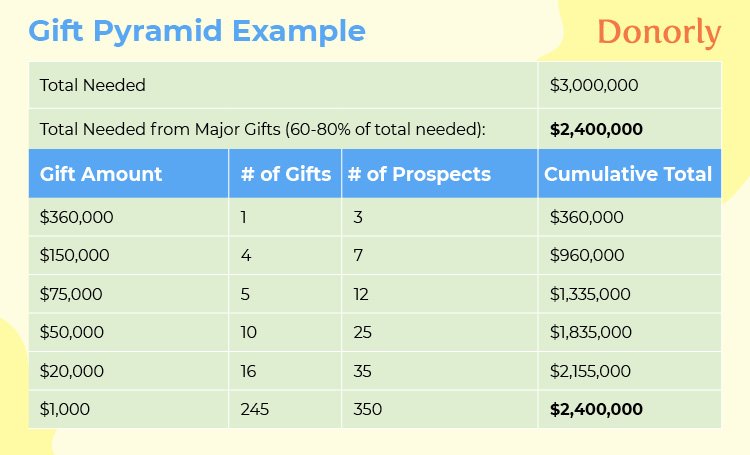How to Get Your Board On Board with a Capital Campaign
Launching a capital campaign is a pivotal moment for your nonprofit. These long-term, major fundraising campaigns can transform your organization’s capacity to further your mission and fund major projects like constructing a building or starting an endowment. It’s an exciting step in your nonprofit’s journey, but the scale of this type of campaign can also feel overwhelming.
This is especially true for your board members, who are crucial to have on your team for a successful capital campaign. They may be wary of the time commitment, investment, or the risks that come with such a significant endeavor. However, their support is essential to secure.
To help you secure board buy-in for your capital campaign, we’ll cover each of these steps in detail:
- Explain Your Vision for the Campaign
- Clearly Outline Board Members’ Responsibilities
- Provide as Much Information as Possible
- Seek a Fundraising Consultant’s Help
Once they’re bought in, your board members can become powerful advocates for the success of your campaign. Let’s dive in so you can start earning their support.
1. Explain Your Vision for the Campaign
First, you’ll need to paint a compelling picture of why your organization should launch a capital campaign and what it will help you achieve. Explain the project your campaign will fund and outline how it will help both your organization and beneficiaries long-term.
For example, say that you want to fund a major renovation project for your nonprofit’s women’s shelter. To explain your vision of the project to your board, you might tell them a story of a community member in need who couldn’t access your services last year due to capacity issues. You tell them how many additional women you could serve by expanding this building and give examples of new services you could provide if the building had a full kitchen, a clinic, and a playground for children.
Be ready to answer any questions your board members may have about your vision for the campaign. Then, emphasize the long-term strategic impacts that a successful campaign could have on your organization, such as:
- Increased fundraising capacity. Through the course of conducting a capital campaign, your team will greatly improve their fundraising skills and knowledge. Ultimately, this experience will help you build a stronger fundraising foundation that will support your nonprofit for years to come.
- Stronger relationships with major donors and the community. Capital campaigns require extensive support from major donors and the wider community, so you’ll spend plenty of time cultivating and stewarding these relationships. This presents an opportunity to get to know major donors better and form deeper, lasting connections.
- Increased donor trust. When supporters see that your organization can successfully conduct a major fundraising campaign, they’ll feel confident in your capacity to enact change.
Presenting all of this information early on will help your board focus on the intended impact of the campaign and visualize all the positive outcomes.
2. Clearly Outline Board Members’ Responsibilities
Your board members will play a major role in the campaign once you launch it, so it’s important to break down their responsibilities and explain each one upfront. This will also give board members an idea of what the campaign will look like day-to-day, making it seem more manageable and realistic.
Sit down with your board and explain their responsibilities for the campaign, which might include:
- Approving major strategic decisions.
- Using their networks to find and introduce major donor prospects.
- Being involved in the major donor cultivation process, such as by communicating with prospects and making fundraising appeals personally.
You may also need a few dedicated board members to serve on your campaign’s planning and steering committees. Being a committee member requires a greater time commitment, so be upfront and explain the additional responsibilities in detail to your board members.
3. Provide as Much Information as Possible
You won’t have a full plan for your capital campaign at this stage, but you should be prepared to give your board members as much information about the campaign as you can. At a minimum, this should include:
- A topline fundraising goal
- The purpose of the campaign
- Reasons donors and board members should support the campaign
- Potential lead and major donors
- A proposed budget and timeline for the campaign
You’ll build out most of these plans once you have your board’s support, but having a basic outline of how the campaign will look is enough for now. It’s helpful to present this information formally, either by creating a document or giving an in-depth presentation. Resources like Kwala’s board report template can provide a helpful starting point if you’re not sure how to begin.
Be sure to include any existing materials or plans in your presentation. For example, you might include a basic fundraising calendar or a gift pyramid like the one below:

Resources like these will help board members visualize how you can earn enough support to reach your goal. And they aren’t set in stone! You’ll have plenty of time to adjust all of your plans and fundraising goals after you secure board buy-in.
4. Seek a Fundraising Consultant’s Help
Finally, don’t be afraid to seek help from the experts. Conducting a capital campaign is a major endeavor and many nonprofits find that they need outside support from a fundraising consultant. If you research and choose a consultant early on in the planning process, they can help you gain the support of your board members.
Specifically, a qualified capital campaign consultant can help you:
- Convince your board of your campaign’s viability. By conducting a feasibility study to assess your organization’s readiness for a capital campaign, your consultant can give your board members a clear report about the campaign’s viability. According to Donorly, this report will detail your strengths and resources, along with any recommendations for steps you should take before moving forward to put your nonprofit in a better position to succeed.
- Educate your board on capital campaign best practices. Fundraising consultants have seen it all, so they know the ins and outs of launching a successful capital campaign and can pass that knowledge on to board members. For instance, they can give board members a refresher on how to make a fundraising ask, provide tips for cultivating major donors, or break down financial best practices.
After getting buy-in from your board, your consultant can also guide you through the capital campaign planning process from start to finish. This includes performing prospect research to find major donors, strategizing about when to launch the campaign publicly, and even developing a donor recognition plan to strengthen your relationships with key donors.
Once you do get your board on board with a potential capital campaign, don’t forget to show your appreciation! Your board members will play a major role in the success of your campaign, so make sure they know how much their hard work is valued. Not only will this strengthen board members’ commitment to your cause, but it can also make them more excited about getting involved in future campaigns.
